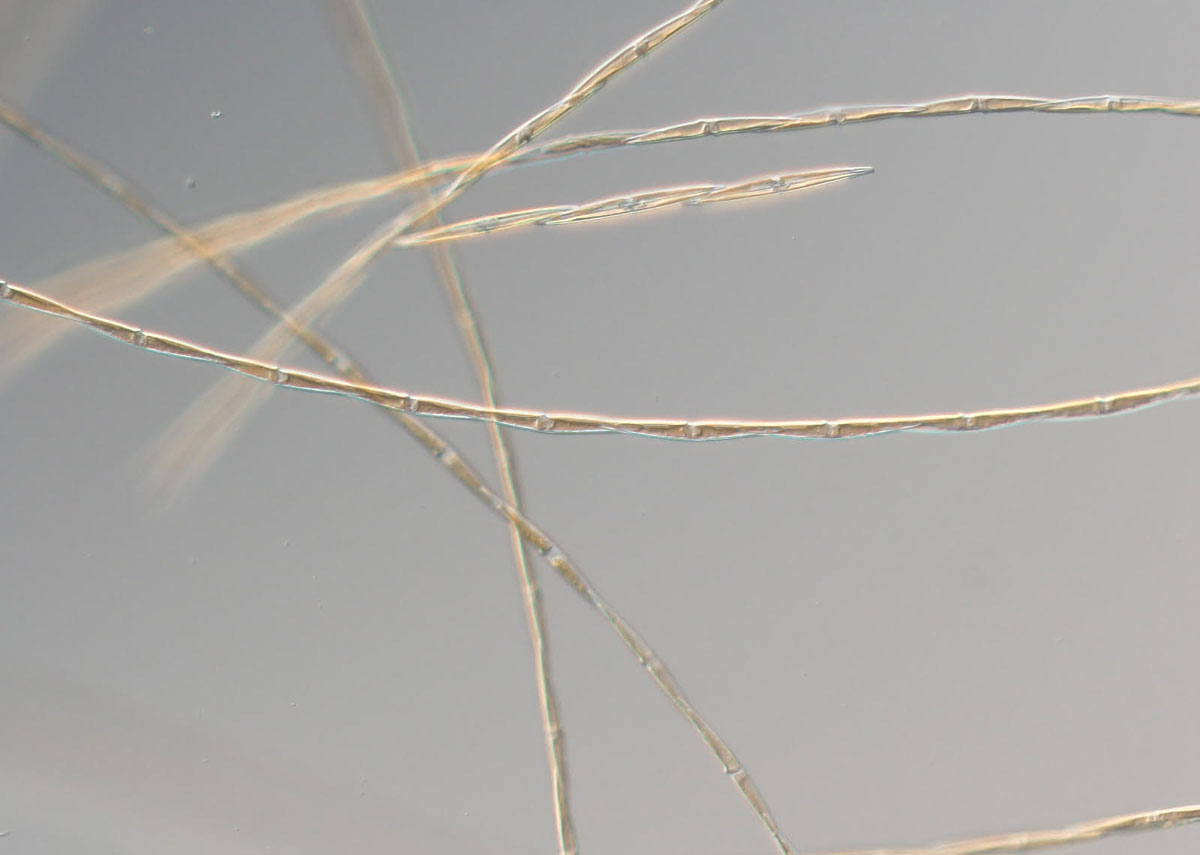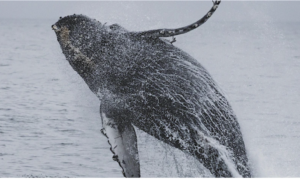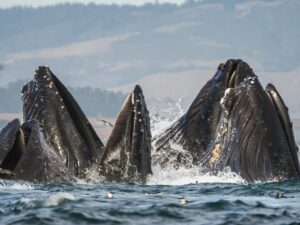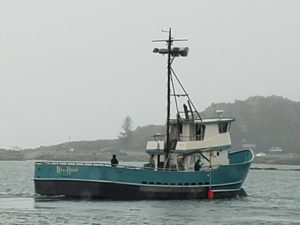Pseudo-nitzschia is the unwanted gift that keeps on giving.
The single-celled algae, which produces the neurotoxin domoic acid, created an unprecedented bloom in the Pacific this summer, causing a spike in marine mammal deaths and prompting closures of California’s Dungeness and rock crab fisheries. After examining months of test data by the California Department of Public Health, regulators and fisheries representatives at a meeting of the state’s Joint Committee on Fisheries and Aquaculture in Santa Rosa early in December announced mixed results.
Average levels of the potent neurotoxin in Dungeness and rock crab intestines have declined in recent weeks in nearly every sampling area from Crescent City to Santa Barbara. In some spots south of Monterey, the drop-off has been dramatic. By the end of November, San Francisco, Half Moon Bay and several other areas had their first “clean” test: None of the crabs taken during a sample collection showed domoic acid levels above the safety threshold of 30 parts per million. To open crab fisheries the state requires two consecutive clean tests at least a week apart along the entire coastline.
But in the northern part of the state, about half the crab samples were still showing unsafe levels of the toxin as of last month. In the Fort Bragg area, late November tests showed levels of domoic acid were significantly higher than they’d been a month before. There are also some alarming outliers: one rock crab caught on the north side of San Miguel Island off Santa Barbara on Nov. 23 showed domoic acid levels of 1,000 parts per million.
Matt Conens of the California Department of Public Health said that three people in the state have reported falling ill after eating crab in recent months, but those reports were not confirmed by physicians. Domoic acid poisoning, which in severe cases can lead to permanent memory loss or death in people, can be difficult to distinguish from other forms of foodborne illness if it’s mild, Conens said. “Unless an individual develops the neurologic syndrome such as seizures or loss of memory, the illness is likely to be missed or misdiagnosed,” he said in an e-mail.
Toxic Oceans from Graelyn Brashear, UC Berkeley Graduate School of Journalism, on Vimeo.
William Cochlan, a marine ecologist at San Francisco State’s Romberg Tiburon Center who studies harmful algal blooms, said the state’s test data are in line with what he’d expect to see as this year’s record-setting Pseudo-nitzschia bloom finally ends. “We were seeing the bloom of the species starting to decline much quicker south of here than north of here,” Cochlan said.
As winter begins, the bloom will continue to die back, he said. Pseudo-nitzschia’s ideal conditions aren’t well-understood, but one thing all phytoplankton need is light, and they’re getting less of it as days get shorter and ocean mixing pushes the algae deeper into the water column.
Still, it may be weeks before the domoic acid is thoroughly flushed out of the food chain, Cochlan said. Because the toxin is water-soluble and doesn’t accumulate in fat stores, most animals can clear it from their bodies quickly, he said. But first, they have to stop ingesting it. That means the razor clams and other crab prey have to get clean first.
If anything, he said, he’s surprised the levels in Dungeness crab are declining so quickly. He thinks the fisheries should take heart. “Based on the levels they’re reporting now, they may open by Christmas,” he said.
Jordan Traverso, a spokeswoman for the California Department of Fish and Wildlife, was less clear on a timeline.
“Who knows?” Traverso said. Nobody can predict when the unusually warm Pacific Ocean temperatures believed to have contributed to the massive bloom will dissipate, she said. “You can’t count on Mother Nature to do what you want her to do sometimes.”
Traverso said it’s possible that if California’s commercial crab fishery does open this winter, its closure date could be pushed later, allowing the industry to make up for lost time. There’s precedent for similar “adaptive management,” she said. In 2012, the state delayed the season because crabs were underdeveloped, then extended it several weeks.
But managing fisheries affected by toxins is complex, and involves multiple state agencies. “This is a different kind of emergency rulemaking,” Traverso said.
Meanwhile, experiments in Cochlan’s lab are shedding light on the complex ecology of the disruptive algae. He and his research assistants have been growing Pseudo-nitzschia australis under a variety conditions for months. One preliminary finding stands out, he said: They observed that after a shift from a pH of 8.1 to the slightly more acidic 7.8 — which can happen when deeper ocean water cycles up to the surface — their algae’s growth rate dropped by half, even as temperatures remained constant.
The assumption has been that warm ocean waters are largely to blame for the bloom, Cochlan said, but that assumption could be faulty— a matter of correlation rather than causation. If upwelling fails to occur, it could disrupt both water temperatures and acidity, he said. Scientists don’t know enough about Pseudo-nitzschia yet to say which variable shifted the species into overdrive this year.
“You can sort of turn the whole story around,” he said.
The main takeaway, said Cochlan, is that understanding the dangerous algae requires examining many factors at once. “We have to look at the complete environmental impact on these cells—temperature, salinity, nutrients,” he said. “That’s the only way we can address this.”





